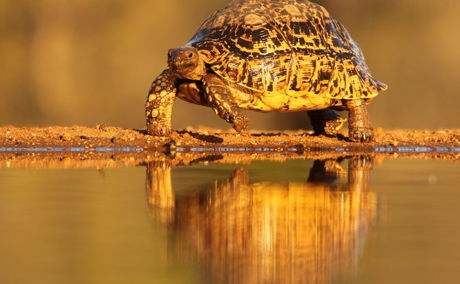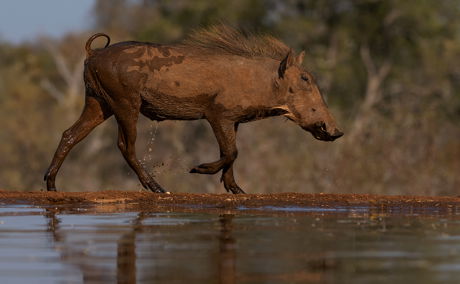Confused? Let us shed some light on the subject.
Wildlife Photography Blog – 10 tips when capturing images from a hide.
This stunning wildlife photography image was recently captured from the sunken hide at Indlovu River Lodge, by Rob Lücke. Rob was part of a group participating in a Photographic Course, presented by well-known wildlife photography expert, Albert Frost.
Hide photography has numerous advantages to other types of wildlife photography. There are however a few things to keep in mind when taking pictures from a hide:
1. Choose your subject
The hides are usually based in a location to capture images of specific mammals or birdlife, such as bee-eaters, kingfishers or vultures. The hides at Indlovu can offer both.
2. Choose a destination that offers you a variety of hides
If your chosen destination can offer different types of hides, it will supply you with more variety. Hide photography is not a substitute for good field craft and photographic skills, thus it is always good to identify a location, like Indlovu River Lodge, that not only offers hide sessions, but can also include safari game drives to get the most out of your trip.
3. Join a photo safari company
You will maximise your own success if you join a wildlife photography safari company, such as iCapure Photo Safaris, that can share their technical and practical photography skills, and guide you to optimise the quality of your shots. The photography guides are also familiar with the area as well as the animal behaviour, and they can prepare you for specific shots.
4. Know your gear
Technical know-how and a fancy kit is not the most important. However, you do still need to have the knowledge of how your camera works and what you can do to obtain certain results.
The really great action-packed moments in wildlife photography last on average between five and 20 seconds. If you are not intrinsically familiar with the settings of your camera, or the abilities of your chosen lens, you will either miss it or blow the images you do manage to capture.
5. Be aware of minimum focal distance limitations on your lenses
It’s important to know how far the subject will be from where you are positioned. This will help you to determine the minimum focal length that you need. If your subject is going to be four to six metres from you, a focal length of 24mm-300/400mm should be fine.
6. Use supports
Some hides and safari vehicles offer tripods and beanbags as support. Wildlife photography is often about quickly changing your position so I personally prefer to invest in gimbal heads and mounting plates. These are available at Indlovu.
7. Patience is a virtue
A patient wildlife photographer, who has empathy and a fascination for the animals in front of the camera, will always have a much more enjoyable time in the field than somebody who gets frustrated because they aren’t getting the exact photo they envisioned. Wildlife photography means that your images are predicated on the fact that things in nature are unpredictable. Anything can happen at any time…
8. Keep movement and noise to a minimum
Once you are inside, you still have to keep your movements to a minimum and be mindful of noise. Sound travels further than you can see! Take everything you need into the wildlife photography hide with you. Don’t forget to take water, a snack and insect repellent, as you may be in there a few hours at a time.
Turn your mobile phone (cell phone) to silent mode before arriving at the hide location. You can also use the silent shutter function on your camera.
9. Additional tips and tricks
- I have found that a wireless remote works very well when you are sitting at a bird hide with lots of action. For example, at a bee-eater hide the bee-eaters usually fly in and out at high speeds, and from more than one direction. Instead of looking through your viewfinder, you can sit back, enjoy the action and use your remote with ease.
- Since I’ve discovered back button focusing I haven’t focused or composed my shot any other way.
- Time lapse photography at a hide can be a great alternative, especially if you have big herds of elephant or antelope visiting the waterhole.
- Don’t forget to sometimes switch to video mode and take a few short videos of the action.
10. Last but not least
We need to be mindful of the privilege of spending time in nature and being in places where the hand of man hasn’t quite exerted its full force yet.
*This article was adapted from the full article by Anna-Mart Kruger, published by Africa Geographic.
Click here for more info on wildlife photography packages at Indlovu River Lodge.
For more info on the next Wildlife Photography Course at Indlovu, contact Louisa at
Lodge: +27 (0) 15 383 9918 or email: [email protected]
Further Reading
It was such a pleasure hosting this years competition winner Michiel Duvenhage and his wife Mart-Mari. This is what they had to say about their experience.
At Indlovu River Lodge our food is prepared with care by our dedicated staff. We like giving our guests a warm, local experience by making traditional South African food, but sometimes we add a nice European twist to make our foreign guests feel more at home.









Share This Post